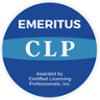As the date for oral argument looms in Ariad v. Lilly, as does an en banc decision as to the existence and/or the role of the written description requirement (WDR) in Section 112, I thought it would be worthwhile to re-visit an article I published in the April 2003 issue of JPTOS. (A copy can be found at the end of this posting.) Please read the concluding part of this article in view of my posts on this site of August 24, 2009 and May 5, 2009. The article is entitled “Do-Over! — The Federal Circuit Takes a Second Look at Enzo v. Gen-Probe.”
Put simply, the debate within the Federal Circuit is between the Judges who want to return the WDR to its role in settling priority disputes, and the Judges who want the WDR to ensure that the specification demonstrates that the inventors had “adequate possession” of the invention – to do something more than simply teach the interested public how to make and use the invention. Even a disclosure of actual reduction to practice (e.g., of actual possession), is not, per se, sufficient for this group. (“While ‘possession’ is a relevant factor in determining whether an invention is described, it is only a criterion for satisfying the statutory written description requirement. Showing possession is not necessarily equivalent to providing a written description.”) The specification must also permit the art to “visualize or recognize the identity of the subject matter of the claim.” Enzo I, 285 F.3d at 1018.
Thus, in late 2002, the legal battle lines are sharply drawn. One camp of Judges, led by Judge Rader, believes that the WDR is no more than a semantic test for the “right to use” the claim language in question. If the claim language is supported by the specification, the WDR is satisfied. Enablement is a separate issue that is to be resolved by application of the very fact-specific Wands factors. In re Wands, 858 F.2d 731 (Fed. Cir. 1988). These eight factors, used for determining whether or not the enablement requirement is met, include the nature of the invention, the breadth of the claims, the level of ordinary skill in the art, the level of predictability in the art and the existence of working examples. See also M.P.E.P. 2164.01(a) (8th ed. 2001). The camp led by Judge Lourie expects a lot more from the WDR; along with the enablement requirement, it now imparts or denies the “right to claim” the invention at issue. That is nearly as equitable a mission as that assigned to the doctrine of equivalents.
The WDR is evolving one fact situation at a time, and without en banc review, entire classes of patents will move in and out of its invalidity shadow. Two hypothetical fact patterns may serve to illustrate the uncertainties in the current WDR. In the first, an inventor isolates a new protein, factor X, from liver cells. The inventor knows nothing about the structure, or even the class of protein, such as an enzyme or a hormone, only that it is not an antibody. However, the protein binds to a receptor site on prostate cancer cells and blocks their division completely. If the inventor files at this point, the court is presented with actual possession and purely functional claiming. If the inventor deposits some of factor X, a step usually not taken with a pure chemical compound, the claim to “factor X” and its functional language could presumably be within the Enzo safe harbor. The American Type Culture Collection does not list “proteins” as materials it will accept for deposit. If the inventor fails to deposit prior to issuance, the specification would not meet the WDR, the claims would be invalid, and a continuation-in-part fully characterizing factor X would not be entitled to the filing date of the parent, since the description of factor X in the parent would not meet the requirements of Section 112. 35 U.S.C. Section 120.
In the second hypothetical case, an inventor uses computational chemistry to identify consensus sequences that are responsible for the enzymatic activity of a protein encoded by a series of related plant genes. The software developed by the inventor then “mixes and matches” the consensus sequences on the inert peptidyl framework to optimize the bioactivity of the enzyme, arriving at a genus of hypothetical high-activity enzymes, all defined by complete sequences. If the inventor files at this point, with adequate directions as to how to assemble the synthetic enzymes, he has produced a presumably enabling specification with complete structural data, but with no actual reduction to practice whatsoever. Is this an example of a specification that should fail the heightened WDR, or one that should meet the precise definition test of the new WDR? Do we need more than the Wands factors to evaluate the ability of the specification to place the invention in the hands of the public? Should this inventor, who never walked into a laboratory receive a patent, while the inventor of factor X be left with nothing but the satisfaction of curing cancer?
If factor X is an antibody, and the target is known, perhaps binding affinity language would meet the WDR. But what if it is a hormone, or a small molecule, or an “anti-inflammatory steroid,” an example of inadequate description given by the Enzo II panel? And is it really the best use of the court’s time to resolve endless fact situations on the basis of five words in the statute that provide no guidance whatsoever as to what they require, beyond some degree of correspondence between the specification and the claims? With the clearly articulated division of opinions within the court, the fate of any patent appealed from a WDR decision below will depend entirely on the panel that appellant draws. Whether or not the interested public all agree with the Wands requirements, they have proved to be a workable test for meeting the make-and-use requirement of Section 112. It is time for the court to deliver Lilly and Enzo (I) to the doctrinal scrap heap where holdings like Durden and Druey ended up, and let the evolution of biotechnology patent law continue in a productive direction. However, we all know that “bad facts make bad law,” and I don’t see how Ariad will be able to move WDR jurisprudence in a direction that will favor patenting early-stage biotechnology.






